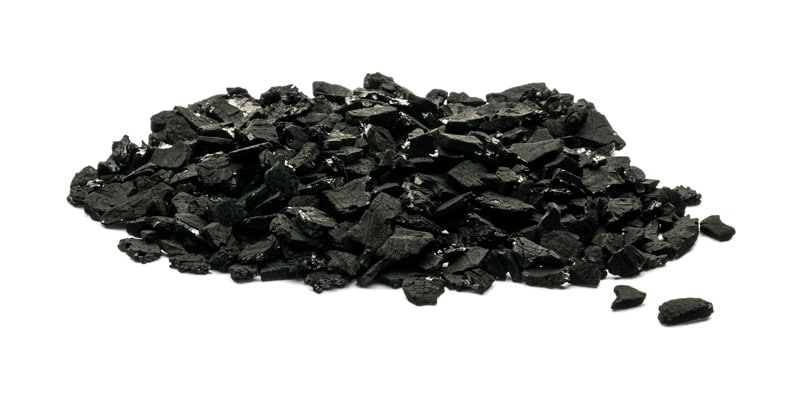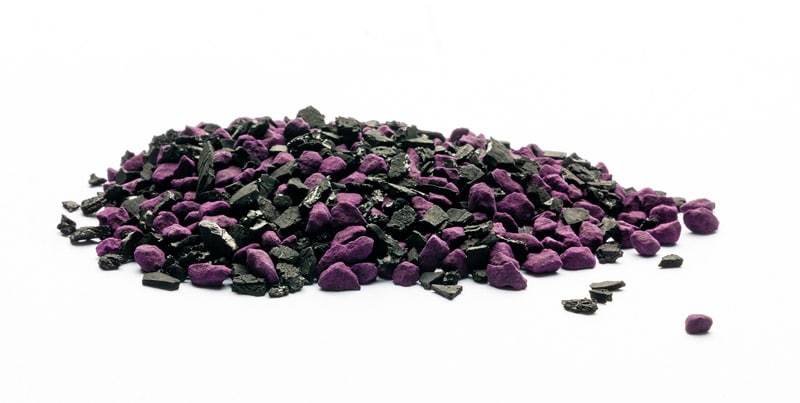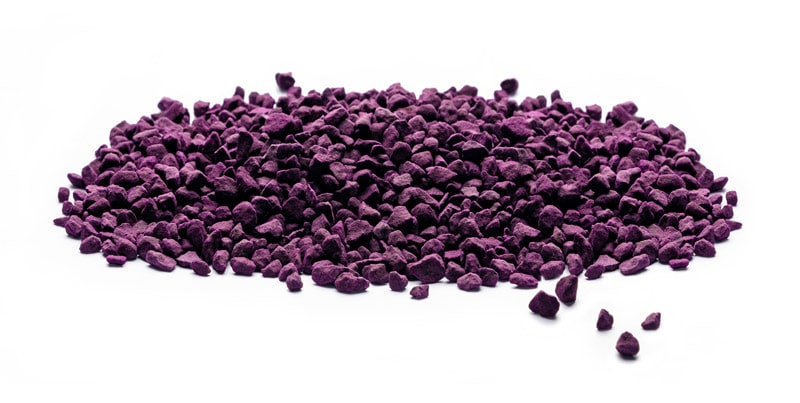Air Pollutants
Search for your pollutant, contaminant or concern for a product
Dioxane
1,4-Dioxane, often called dioxane because the other isomers of dioxane are rare, is a heterocyclic organic compound. It is a colorless liquid with a faint sweet odor similar to that ofdiethyl ether. It is classified as an ether. This colorless liquid is mainly used as a stabilizer for the solvent trichloroethane. It is an occasionally used solvent for a variety of practical applications as well as in the laboratory.
Media Solution
Dipropyl Ketone
Ketone is a class of chemical compounds contain the carbonyl group in which the carbon atom is covalently bonded to an oxygen atom. It has the general formula RCOR’ where the groups R and R’ may be the same or different, or incorporated into a ring (R and R’ are alkyl, aryl, or heterocyclic radicals). The simplest example, R and R´ are methyl group, is acetone (also called 2-propanone, CH3COCH3) which is one of the most important ketones used in industry (low molecular weight ketones are general purpose solvents.) In the IUPAC system, the suffix -one is used to describe ketone with the numbering of the carbon atom at the end that gives the lower number. For example, CH3CH2COCH2CH2CH3 is named 3-hexanone because the whole chain contains six carbon atoms and the oxygen is connected to the third carbon from the lower number. Ketones can be made by the oxidation of secondary alcohols and the destructive distillation of certain salts of organic acids. Carbonyl group structures are:

Media Solution
Essential Oils
An essential oil is a concentrated hydrophobic liquid containing volatile aroma compounds from plants. Essential oils are also known as volatile oils, ethereal oils or aetherolea, or simply as the “oil of” the plant from which they were extracted, such as oil of clove. An oil is “essential” in the sense that it carries a distinctive scent, or essence, of the plant. Essential oils do not form a distinctive category for any medical, pharmacological, or culinary purpose.
Essential oils are generally extracted by distillation. Other processes include expression, or solvent extraction. They are used in perfumes, cosmetics, soaps and other products, forflavoring food and drink, and for adding scents to incense and household cleaning products.
Various essential oils have been used medicinally at different periods in history. Medical applications proposed by those who sell medicinal oils range from skin treatments to remedies for cancer, and often are based solely on historical accounts of use of essential oils for these purposes. Claims for the efficacy of medical treatments and treatment of cancers in particular, are now subject to regulation in most countries.
As the use of essential oils has declined in evidence-based medicine, one must consult older textbooks for much information on their use.[1][2] Modern works are less inclined to generalize; rather than refer to “essential oils” as a class at all, they prefer to discuss specific compounds, such as methyl salicylate, rather than “oil of wintergreen”.[3][4]
Interest in essential oils has revived in recent decades with the popularity of aromatherapy, a branch of alternative medicine that claims that essential oils and other aromatic compounds have curative effects. Oils are volatilized or diluted in a carrier oil and used in massage, diffused in the air by a nebulizer, heated over a candle flame, or burned as incense.
The techniques and methods first used to produce essential oils was first mentioned by Ibn al-Baitar (1188–1248), an Andalusian physician, pharmacist and chemist.
Media Solution
Ether
Ethers (![]() /ˈiËθər/) are a class of organic compounds that contain an ether group — an oxygen atom connected to two alkyl or aryl groups — of general formula R–O–R’.[1] A typical example is thesolvent and anesthetic diethyl ether, commonly referred to simply as “ether” (CH3-CH2-O-CH2-CH3). Ethers are common in organic chemistry and pervasive in biochemistry, as they are common linkages in carbohydrates and lignin.
/ˈiËθər/) are a class of organic compounds that contain an ether group — an oxygen atom connected to two alkyl or aryl groups — of general formula R–O–R’.[1] A typical example is thesolvent and anesthetic diethyl ether, commonly referred to simply as “ether” (CH3-CH2-O-CH2-CH3). Ethers are common in organic chemistry and pervasive in biochemistry, as they are common linkages in carbohydrates and lignin.
Media Solution
Ethyl Acetate
Ethyl acetate (systematically, ethyl ethanoate, commonly abbreviated EtOAc or EA) is the organic compound with the formula CH3COOCH2CH3. This colorless liquid has a characteristic sweet smell (similar to pear drops) and is used in glues, nail polish removers, and cigarettes (see list of additives in cigarettes). Ethyl acetate is the ester of ethanol and acetic acid; it is manufactured on a large scale for use as a solvent. The combined annual production in 1985 of Japan, North America, and Europe was about 400,000 tons.[1] In 2004, an estimated 1.3M tons were produced worldwide.
Media Solution
Ethyl Acrylate
Ethyl acrylate is an organic compound primarily used in the preparation of various polymers. It is a clear liquid with an acrid penetrating odor. The human nose is capable of detecting this odor at a thousand times lower concentration than is considered harmful if continuously exposed for some period of time.
Media Solution
Ethyl Alcohol
Ethanol, also called ethyl alcohol, pure alcohol, grain alcohol, or drinking alcohol, is a volatile, flammable, colorless liquid. It is a psychoactive drug and one of the oldestrecreational drugs. Best known as the type of alcohol found in alcoholic beverages, it is also used in thermometers, as a solvent, and as a fuel. In common usage, it is often referred to simply as alcohol or spirits.
Ethanol is a straight-chain alcohol, and its molecular formula is C2H5OH. Its empirical formula is C2H6O. An alternative notation is CH3–CH2–OH, which indicates that the carbon of a methyl group (CH3–) is attached to the carbon of a methylene group (–CH2–), which is attached to the oxygen of a hydroxyl group (–OH). It is a constitutional isomer of dimethyl ether. Ethanol is often abbreviated as EtOH, using the common organic chemistry notation of representing the ethyl group (C2H5) with Et.
The fermentation of sugar into ethanol is one of the earliest organic reactions employed by humanity. The intoxicating effects of ethanol consumption have been known since ancient times. In modern times, ethanol intended for industrial use is also produced from ethylene.[3] Ethanol has widespread use as a solvent of substances intended for human contact or consumption, including scents, flavorings, colorings, and medicines. In chemistry, it is both an essential solvent and a feedstock for the synthesis of other products. It has a long history as a fuel for heat and light, and more recently as a fuel for internal combustion engines.
Ethanol is the systematic name defined by the IUPAC nomenclature of organic chemistry for a molecule with two carbon atoms (prefix “eth-”), having a single bond between them (suffix “-ane”), and an attached -OH group (suffix “-ol”).[1] Ethyl redirects here; such usage almost always refers to a part of this sub-grouping inside a larger molecule.
Media Solution
Ethyl Amine
Ethylamine is an organic compound with the formula CH3CH2NH2. This colourless gas has a strong ammonia-like odor. It is miscible with virtually all solvents and is considered to be a weak base, as is typical for amines. Ethylamine is widely used in chemical industry and organic synthesis.
Media Solution
Ethyl Bromine
Bromoethane, also known as ethyl bromide, is a chemical compound of the haloalkanes group. It is abbreviated by chemists as EtBr. This volatile compound has an ether-like odour.
Media Solution
Ethyl Chloride
Chloroethane or monochloroethane, commonly known by its old name ethyl chloride, is a chemical compound with chemical formula C2H5Cl, once widely used in producingtetraethyllead, a gasoline additive. It is a colorless, flammable gas or refrigerated liquid with a faintly sweet odor.
 HS-AC
HS-AC
 XB-17
XB-17
 HS-600
HS-600